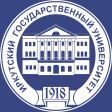List of issues > Series «Earth Sciences». 2025. Vol 52
The Use of Automated Hydrological Complexes for Stage
Measurement on the Russian Monitoring Network
Buzmakov Sergey Victorovich, Head of the Laboratory, State Hydrological Institute, 23, 2nd line Vasilyevsky Island, St. Petersburg, 199004, Russian Federation, e-mail: s.buzmakov@hydrology.ru
Iukhno Artem Vladimirovich, Research Scientist, State Hydrological Institute, 23, 2nd line Vasilyevsky Island, St. Petersburg, 199004, Russian Federation, e-mail: artem-ardene@mail.ru
Ostashov Andrey Alekseevich, Research Scientist, State Hydrological Institute, 23, 2nd line Vasilyevsky Island, St. Petersburg, 199004, Russian Federation, e-mail: andrey.ostashov@gmail.com
Vuglinskii V.S, Vysotskii D.V., Yakovleva T.I. Monitoring poverkhnostnykh vodnykh ob"ektov v Rossii [Monitoring of surface water bodies in Russia]. Meteorologiya i gidrologiya, 2021, iss. 6, pp. 77-88. https://doi.org/10.52002/0130-2906-2021-6-77-88 (in Russian)
Obzor sostoyaniya sistemy gidrologicheskikh nablyudenii, obrabotki dannykh i podgotovki informatsionnoi produktsii v 2023 [Review of the state of the Russian national hydrological observation system, data processing and information production in 2023]. St. Petersburg, GGI Publ., 2024. (in Russian)
Gao A., Shiqiang W., Fangfang W., Xiufeng W., Peng X., Lei Y., Senlin Z. A Newly Developed Unmanned Aerial Vehicle (UAV) Imagery Based Technology for Field Measurement of Water Level. Water, 2019, vol. 11, no. 1, pp. 124-139. https://doi.org/10.3390/w11010124
Madueno A., Lineros M.L., Estevez J., Giraldez J. Assessing the Best Gap-Filling Technique for River Stage Data Suitable for Low Capacity Processors and Real-Time Application Using IoT. Sensors, 2020, vol. 20 (21). https://doi.org/10.3390/s20216354
Riggs R.M., Allen G.H., Jida Wang et al. Extending global river gauge records using satellite observations. Environmental Research Letters, 2023, vol. 18, https://doi.org/10.1088/1748-9326/acd407
Gabbardo dos Reis G., Fialho Breda J.P.L., Siqueira V.A. SARDIM: uma plataforma de acompanhamento hidrológico em tempo real dos rios da América do Sul. Brazilian Journal of Water Resources, 2023, vol. 28, no. 10. https://doi.org/10.1590/2318-0331.282320220106
Hirsch R.M., Fisher G.T. Past, Present, and Future of Water Data Delivery from the U.S. Geological Survey. Journal of Contemporary Water Research & Education, 2014, vol. 153, no. 1, pp. 4- 15. https://doi.org/10.1111/j.1936-704X.2014.03175.x
Internatuional altimetry team. Altimetry for the future: Building on 25 years of progress. Advances in Space Research, 2021, vol. 68, pp. 319-363. https://doi.org/10.1016/j.asr.2021.01.022
Jing Lin Ng, Huang Y.F., Chong A.H., Ahmed A.N., Syamsunurc D. Estimation of missing streamflow data using various artificial intelligence methods in peninsular Malaysia. Water Practice and Technology, 2024, vol. 19, no. 11, pp. 4338-3354. https://doi.org/10.2166/wpt.2024.265
JRC of European Commission № 108843 Report. Assessment of the capacity for flood monitoring and early warning in enlargement and Eastern/Southern Neighbourhood countries of the European Union. JRC Science Hub. Luxemburge, 2018, 78 p. https://doi.org/10.2760/18691
Masoudimoghaddam M., Yazdi J., Shahsavandi M. A low-cost ultrasonic sensor for online monitoring of water levels in rivers and channels. Flow Measurement and Instrumentation, 2025, vol. 102. https://doi.org/10.1016/j.flowmeasinst.2024.102777
Mishra A.K., Coulibaly P. Developments in hydrometric network design: A review. Reviews of Geophysics, 2009, vol. 47, no. 2. https://doi.org/10.1029/2007RG000243
Boldrini E., Nativi S., Pecora S., Chernov I., Mazzetti P. Multi-scale hydrological system-ofsystems realized through WHOS: the brokering framework. International Journal of Digital Earth, 2012, vol. 15, no. 1, pp. 1259-1289. https://doi.org/10.1080/17538947.2022.2099591
Natividad J.G., Mendez J.M. Flood Monitoring and Early Warning System Using Ultrasonic Sensor. IOP Conference Series: Materials Science and Engineering, 2020, vol. 325. https://doi.org/10.1088/1757-899X/325/1/012020
Njue N., Kroese J.S., Jacobs S.R., Weeser B., Breuer L., Rufino M.C. Citizen science in hydrological monitoring and ecosystem services management: State of the art and future prospects. Science of The Total Environment, 2019, vol. 693. https://doi.org/10.1016/j.scitotenv.2019.07.337
Quezada V.M., Anguiano J.H.H., Miranda R. et al. Experimental instrumentation of water stage monitoring stations in mountain streams bedrock using pressure transducers. Flow Measurement and Instrumentation, 2023, vol. 93. https://doi.org/10.1016/j.flowmeasinst.2023.102436
Sanhueza P.A., Karelovic B., Link O. Automatic Gap-Filling of Daily Streamflow Time Series in Data-Scarce Regions using a Machine Learning Algorithm. Journal of Hydrology, 2021, vol. 528, no. 8. https://doi.org/10.1016/j.jhydrol.2021.126454
Steward B. Measuring what we manage – the importance of hydrological data to water resources management. Hydrological Sciences and Water Security: Past, Present and Future. Proceedings of the 11th Kovacs Colloquium. IAHS Publ., 2015, vol. 366, pp. 80-85. https://doi.org/10.5194/piahs-366-80-2015
The CEMS Hydrological Data Collection Centre Annual report. Luxembourg, Publications Office of the European Union, 2025. https://doi.org/10.2760/0123431
Riggs R.M., Allen G.H., Brinkerhoff C.B., Sikder Md.S., Wang J. Turning Lakes Into River Gauges Using the LakeFlow Algorithm. Geophysical Research Letters, 2023, vol. 50, no. 10. https://doi.org/10.1029/2023GL103924
Ullo S.L., Sinha G.R. Advances in Smart Environment Monitoring Systems Using IoT and Sensors. Sensors, 2020, vol. 20, no. 11, pp. 3113-3131. https://doi.org/10.3390/s20113113
